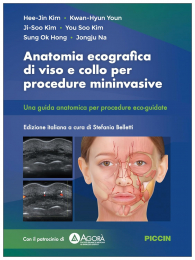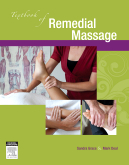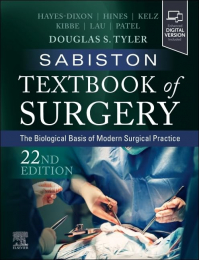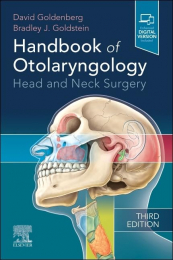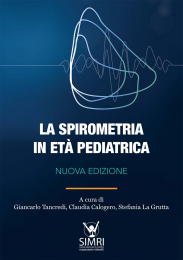Non ci sono recensioni
| Description | |
|
A comprehensive, practical book for students and practitioners of remedial massage. |
| Author Info | |
|
By Sandra Grace PhD, MSc, Grad Cert Sports Chiro, Cert Clinical Chiro Paediatrics, Dip Acup, DBM, DO, DC, Dip Ed, BA. Senior Lecturer in Osteopathic Medicine, Southern Cross University, Adjunct Research Associate, The Education for Practice Institute, Charles Sturt University and Mark Deal BSc, DC, DO, Dip Ed (Technical Chiropractor, Osteopath, Acupuncturist and Educator, Independent Contractor to Noosa Parade Medical Centre |
Table of Contents:
Preface
Acknowledgements
Foreword
Contributors
Reviewers
1. Remedial massage in Australian healthcare
Defining remedial massage
The context of remedial massage: use of complementary and alternative medicine in Australian healthcare
The remedial massage workforce in Australia
Attitudes towards CAM by medical and other healthcare practitioners
Evidence for remedial massage practice
Evidence for the effectiveness of massage therapy
Future directions
Appendix 1.1: Massage therapy: systematic reviews
References
2. Assessment procedures for remedial massage: an evidence-based approach
Introduction
Principles of assessment in remedial massage practice
Purpose of assessments
Demonstrating treatment effectiveness
Assessment procedures
Client history
Outcome measures
Postural analysis
Gait analysis
Functional tests
Palpation
Legal and ethical requirements for remedial
massage assessment
Key messages
Review questions
Appendix 2.1: Skin cancer
References
Contents
3. Planning remedial massage therapy
Introduction
Principles of treatment
Prioritising client safety
Swedish massage before remedial massage
Active movements before passive
Treating within pain tolerance
Overview of a remedial massage treatment approach
Short- and long-term treatment plans
Client education and self-help
Clients’ preferences
Treatment protocols
Aligning treatment to assessment findings
Monitoring and reviewing treatment plans
Recording remedial massage treatments
Key messages
Review questions
References
4. Remedial massage techniques for muscles
Introduction
Assessing muscle function
Functional defi cit demonstration
Postural assessment
Testing muscles for length
Testing muscles for strength
Palpation
Remedial massage techniques
Deep gliding (with-fi bre) frictions and cross-fibre frictions
Deep transverse friction (DTF)
Soft tissue release (STR)
Key messages
Review questions
References
5. Muscle stretching
Introduction
Functional anatomy
Tissue range of motion
Muscle functions
Types of muscle contractions
CONTENTS
vi
Physical characteristics and neurological refl exesassociated with stretching
Active and passive insuffi ciency
Neurological events that mediate stretching
Types of muscle stretching
1. Passive stretch
2. Active, active-assisted stretch
3. Muscle energy technique
4. Active isolated stretch
5. Ballistic stretch
6. Dynamic stretch
7. Static stretch
8. Proprioceptive Neuromuscular Facilitation
Stretching treatment goals
Assessing clients’ suitability
History
Postural analysis
Gait analysis
Functional tests
Palpation
Evidence for effectiveness
Contraindications and precautions
Applying muscle stretching in remedial massage
Adapting stretches for individual clients
Therapist’s position
Recommendations
Muscle stretching in practice
Review questions
References
6. Myofascial trigger points
Introduction
What is a trigger point?
Locating trigger points
Classifying trigger points
Active and latent trigger points
What causes trigger points?
Identifying trigger points
Characteristics of trigger points
Treating trigger points
Manual techniques
Evidence-base of treatments for trigger points
Contraindications and precautions
Key messages
Review questions
Appendix 6.1: Some key trigger points
References
7. Joint articulation
Introduction
What is joint articulation?
Evidence for the effectiveness of joint articulation and mobilisation
Assessing clients for treatment
History
Functional tests
Palpation
Treating clients
Guidelines
Techniques
Contraindications
Key messages
Review questions
References
8. Myofascial release
Introduction
Functional anatomy review
What is myofascial release?
Assessing clients
History
Postural analysis
Functional tests
Palpation
Treating clients
Evidence for the effectiveness of fascial releasing techniques
Applying the techniques
Integrating myofascial releasing techniques with remedial massage
Contraindications and precautions
Key messages
Review questions
References
9. Lymphatic drainage massage
Introduction
Evidence for the effectiveness of lymphatic drainage massage
Functional anatomy review
Function of the lymphatic system
Oedema
Assessing clients
History
Red fl ag conditions for oedema
Postural analysis
Functional tests
CONTENTS
vii
Palpation 128
Differential diagnosis 128
Treating clients 129
Basic principles 129
Length of treatment 129
Explanation of treatment 129
Regional lymphatic drainage massage 131
Contraindications and precautions 135
Absolute contraindications 136
Relative contraindications 136
Local contraindications 136
Review questions 137
References 137
10. The low back and pelvis 138
Introduction 138
Functional anatomy review 138
Assessment of the lumbar and sacroiliac
region 139
Case history 140
Outcome measures 143
Postural analysis 143
Gait assessment 144
Functional tests 144
Palpation 151
Remedial massage treatment 152
Muscle strain 153
Non-specifi c low back pain 153
Degenerative joint disease (Osteoarthritis/
Degenerative arthritis) 161
Lower crossed syndrome 163
Lumbar disc syndrome 164
Spondylolisthesis 166
Sacroiliac syndrome 168
Key messages 171
Appendix 10.1: McKenzie self-treatments for
sciatica 171
Review questions 172
References 172
11. The thoracic region 173
Introduction 173
Functional anatomy review 173
Typical vertebrae - T2-T8 173
Special features of T1 and T9-12 173
Assessment 174
Case history 176
Outcome measures 176
Postural analysis 176
Gait analysis 176
Functional tests 176
Palpation 182
Remedial massage treatment 182
Muscle strain 182
Thoracic facet syndrome 183
Degenerative joint disease (Osteoarthritis/
Degenerative arthritis) 189
Hyperkyphosis of the upper thoracic spine
(Dowager’s hump) 191
Scheuermann’s disease (Vertebral
epiphysitis) 192
Osteoporosis 193
Scoliosis 194
Thoracic outlet syndrome (Anterior scalene
syndrome) 197
Key messages 198
Review questions 198
References 199
12. The cervical region 200
Introduction 200
Functional anatomy review 200
Assessment 201
Case history 201
Outcome measures 203
Postural analysis 203
Functional tests 204
Palpation 210
Remedial massage treatment 210
Muscle strain 211
Non-specifi c neck pain (including cervical
sprain, strain and vertebral subluxation) 211
Degenerative joint disease (Osteoarthritis/
Degenerative arthritis) 217
Upper crossed syndrome 218
Mechanical/acquired torticollis 220
Cervical disc syndrome 221
Whiplash (acceleration/deceleration) associated
disorders 222
Key messages 224
Review questions 224
References 225
13. The head and face 226
Introduction 226
Headache 226
Assessment of the headache client 226
Remedial massage treatment for headache 231
CONTENTS
viii
Sinusitis 233
Assessment of the client with sinus pain 234
Remedial massage treatment for sinusitis 235
Temporomandibular joint disorders 238
Disorders of the temporomandibular joint 238
Assessment of the client with TMJ
disorder 238
Remedial massage treatments for TMJ
disorders 240
Key messages 241
Headache 241
Sinusitis 241
Temporomandibular joint 241
Review questions 242
Appendix 13.1: MIDAS (The Migraine Disability
Assessment Test) 242
References 243
14. The chest 244
Introduction 244
Functional anatomy review 244
Assessment 246
Case history 246
Outcome measures 247
Postural analysis 247
Functional tests 247
Palpation 250
Remedial massage treatment 250
Muscle strain 250
Rib subluxation/fracture 251
Respiratory conditions 254
Key messages 259
Review questions 260
References 260
15. The shoulder region 261
Introduction 261
Functional anatomy 261
Assessment 261
Case history 262
Outcome measures 264
Postural analysis 264
Functional tests 264
Palpation 269
Remedial massage treatment 271
Overview 272
Muscle strain 272
Shoulder impingement syndrome 282
Degenerative joint disease (Degenerative
arthritis, osteoarthritis) 283
Adhesive capsulitis (frozen shoulder) 284
Acromioclavicular sprains, clavicle fractures and
glenohumeral dislocations 285
Key messages 286
Review questions 286
Appendix 15.1: Shoulder Pain and Disability
Index 287
References 288
16. The elbow region 289
Introduction 289
Functional anatomy 289
Assessing the elbow and forearm 290
Case history 291
Outcome measures 291
Postural analysis 295
Functional tests 296
Palpation 300
Remedial massage treatment 301
Overview 301
Muscle strain 301
Olecranon bursitis 308
Elbow sprain 308
Fractures and dislocations 308
Key messages 308
Review questions 309
References 309
17. The wrist and hand 310
Introduction 310
Functional anatomy 310
Assessment 311
Case history 311
Outcome measures 314
Postural analysis 314
Functional tests 319
Palpation 325
Remedial massage treatment 326
Overview 326
Tendinitis and tenosynovitis 326
De Quervain’s tenosynovitis 327
Carpal tunnel syndrome 330
Sprains 332
Fractures and dislocations 333
Degenerative joint disease and rheumatoid
arthritis 334
CONTENTS
ix
Key messages 335
Review questions 335
References 335
18. The hip region 337
Introduction 337
Functional anatomy 337
Assessment 338
Case history 340
Outcome measures 341
Postural analysis 341
Gait analysis 341
Functional tests 341
Palpation 345
Remedial massage treatment 347
Overview 347
Muscle strain 348
Degenerative joint disease (Degenerative
arthritis, osteoarthritis) 353
Trochanteric bursitis 354
Key messages 355
Review questions 355
References 356
19. The knee 357
Introduction 357
Functional anatomy 357
Assessment 360
Case history 360
Outcome measures 362
Postural analysis 362
Gait analysis 362
Functional tests 362
Palpation 367
Remedial massage treatment 368
Overview 368
Muscle strain 369
Iliotibial band syndrome 370
Patellofemoral pain syndrome 373
Chondromalacia patella 374
Patella dislocation 375
Ligament sprain 375
Meniscal injury 377
Degenerative joint disease (Degenerative
arthritis, osteoarthritis) 377
Bursitis 379
Osgood-Schlatter’s disease 379
Key messages 379
Review questions 380
References 380
20. The leg, ankle and foot 382
Introduction 382
Deep venous thrombosis 382
Functional anatomy 382
Nerve supply to muscles of the leg, ankle and
foot 384
Assessment 384
Case history 386
Outcome measures 387
Postural analysis 388
Gait analysis 389
Functional tests 389
Palpation 396
Remedial massage treatment 398
Overview 398
Leg 398
Muscle strains of the leg 398
Gastrocnemius strain (tennis leg) 398
Shin splints 399
Chronic compartment syndrome 405
Stress fracture of the tibia 407
Varicose veins and spider veins 407
Ankle 407
Achilles tendinopathy 408
Calcaneal bursitis 409
Sever’s disease 409
Ankle sprain 409
Degenerative joint disease of the ankle 411
Foot 411
Plantar fasciitis (heel spur) 412
Forefoot 413
Metatarsalgia 413
Morton’s neuroma (Interdigital
neuroma) 413
Key messages 413
Review questions 414
References 414
21. Specifi c client groups 415
Introduction 415
Children and adolescents 415
Important considerations for assessing and
treating children 415
Evidence for the effectiveness of massage for
children 417
CONTENTS
x
Women 418
Important considerations for assessing and
treating women 418
Evidence for the effectiveness of massage for
women’s health 418
Men 419
Important considerations for assessing and
treating men 419
Geriatric clients 419
Important considerations for assessing and
treating geriatric clients 420
Evidence for the effectiveness of massage for
older clients 420
Clients with a mental illness 420
Important considerations for assessing
and treating clients with a mental
illness 420
Evidence for the effectiveness of massage for
clients with a mental illness 421
Key messages 421
Review questions 422
References 422
Index 424
Ultimi prodotti
